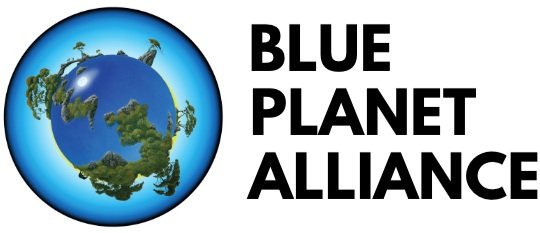Ocean’s Eleven
Two more nations — first Antigua and Barbuda and then St. Kitts and Nevis — have joined Blue Planet Alliance, officially pledging to transition to 100% renewable energy.
That brings us to a total of 11 island nations and territories that have signed our Blue Planet Climate Agreement (BPCA).
The BPCA is a pledge to commit to transition to 100% renewable energy by 2045 (if not before). In a ceremony last Friday night, overlooking the stunning skyline of Honolulu, Antigua and Barbuda’s Minister of Information, Broadcasting, Telecommunications & Information Technology, the Hon. Minister Melford Nicholas, put us into double digits as the 10th country to join us. They were immediately followed by St. Kitts and Nevis, whose Minister of Public Infrastructure, Energy and Utilities, Domestic Transport, Information, Communication and Technology and Posts, the Hon. Minister Konris Maynard, joined as the 11th BPCA signee — and St. Kitts and Nevis have a bold commitment to transitioning by 2030. Both ministers co-signed BPCAs for their countries with Blue Planet Alliance founder Henk Rogers.
Left, Antigua and Barbuda’s Minister of Information, Broadcasting, Telecommunications & Information Technology, the Hon. Minister Melford Nicholas, with BPA Founder Henk Rogers, after signing a Blue Planet Climate Agreement (BPCA); right, St. Kitts and Nevis' Minister of Public Infrastructure, Energy and Utilities, Domestic Transport, Information, Communication and Technology and Posts, the Hon. Minister Konris Maynard, after signing a BPCA.
It reminds one — in a way — of the various movie versions of “Ocean’s Eleven,” which brought together 11 of Hollywood’s biggest stars to pull off increasingly improbable feats: anti-heroes committed to beating the system.
Our version of “Ocean’s Eleven” is bringing together 11 of the planet’s most vulnerable islands to pull off something that also, on its face, seems improbable — transitioning to 100% renewable energy and ending climate change.
But we can end climate change, if we summon the political will to band together and take collective action. That is why we are so thrilled that first Antigua and Barbuda, and then St. Kitts and Nevis, have joined nine other Small Island Developing States (SIDS) countries or territories in signing such a document. (Tonga was first, then Tuvalu, Guam, Palau, Curacao, CNMI, and, this past May, Dominica, Grenada, and Vanuatu.) By officially joining our nonprofit Alliance, these islands are part of a burgeoning movement that is demonstrating to the rest of the world that a carbon-free-fuel future is indeed possible. And while we are now 11 islands strong, Blue Planet Alliance anticipates signing many more countries in 2025.
The signings on Friday night were part of the culmination of a week-long workshop, our third cohort of the Blue Planet Alliance Fellowship Program. Our Fellowship Program taps the talent and leadership that helped Hawaii cross the 100% renewable-energy threshold, and that talent shares its collective wisdom with four representative attendees from each attending country. Those four representatives come from a mix of four sectors: the legislature, the regulatory branch, the utility, and civil society from each participating island. The idea is to get those islands to also commit to a 100% renewable-energy future.
And once an island does, we ask them to sign a Blue Planet Climate Agreement with us, a nonbinding but important symbolic gesture that shows the island is concerned with the existential threat to it posed by the negative impacts of a warming planet — including rising sea levels and temperatures too hot for humanity to thrive.
MORE MOU PARTNERS, TOO!
The signings took place during the third cohort of our Blue Planet Alliance Fellowship Program last week in Hawaii. In addition to islands joining our Alliance, we also added nine new MOU partners to our movement, bringing us to more than 160 organizations that are, like us, committed to aligning human behavior more in harmony with nature. Those organizations are (in alphabetical order):
Caribbean Centre for Renewable Energy and Energy Efficiency (CCREE)
Empressive Designs
FD Communications Consultancy
Gallifrey Foundation
Marine Ecosystems Protected Area (MEPA) Trust
Rotary Club of Dangriga District 4250
St. Helena National Trust
Te Ipukarea Society
University of Curaçao









This past week also saw 10 new islands participate in our Fellowship Program, bringing to a total of 28 island countries or territories that have matriculated through the program. (It is important to note that, as much as we share wisdom with them about our journey in Hawaii, we also are learning from them. Each island has its own unique natural resources, geography, and cultural circumstances that contribute to its renewable-energy potential, and together, by sharing this wisdom, we can go so much further.)
In that we plan to continue to have two Fellowship cohorts a year (every May and October) — in which we have 10 or more islands each time — we anticipate having 70 islands come through our program by the end of 2026. Imagine the diplomatic power that such a group can yield: 70 countries or territories that are the least responsible for — and yet the most vulnerable to — the negative impacts of climate change, putting pressure on the real polluters like China, India, Brazil, and the U.S., to make substantive changes to their energy policies and carbon-emissions, and end climate change.
That is a narrative worthy of an “Ocean’s Eleven”-type script. And it is one that we are helping to write.


